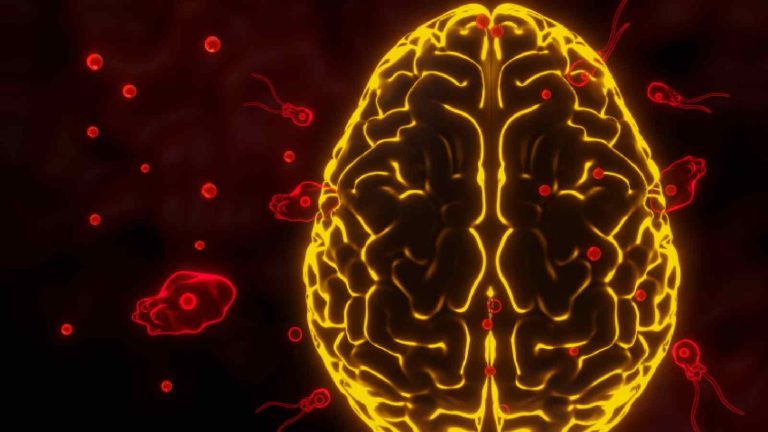
[ad_1]
In a distressing incident in the Alappuzha district in Kerala, India, recently, a 15-year-old boy succumbed to a rare brain infection known as primary amoebic meningoencephalitis (PAM). The cause of this infection is attributed to Naegleria fowleri, also known as ‘brain-eating amoeba’. Authorities from the health department reportedly revealed that the boy initially developed a fever and sought medical assistance at a local clinic a week prior to his demise. However, his condition deteriorated rapidly, and he was shifted to the medical college hospital, where he was diagnosed with the infection. Despite medical intervention, the severity of his symptoms and high fever ultimately proved fatal.
PAM, a highly uncommon infection affecting the central nervous system, poses a significant threat to human health due to its alarming fatality rate. Confirming the tragic incident, Veena George, the state health minister, disclosed that Kerala had previously encountered five cases of this rare infection caused by the ‘brain-eating amoeba’. The first was in 2016, and others followed later in the years of 2019, 2020, and 2022.
How did the 15-year-old boy catch the PAM infection?
Naegleria, a single-celled organism categorized as an amoeba, possesses a specific species called Naegleria fowleri that can infect humans, according to the US Centers for Disease Control and Prevention (CDC). Importantly, PAM is not transmissible from person to person. In the case of the 15-year-old boy, media reports indicate that as per investigations, he regularly bathed in a nearby stream close to his home. The stream is likely to be the source of the amoeba. Naegleria fowleri is known to thrive in various natural environments, particularly warm water habitats.

Health Shots got in touch with Dr Shiji Chalipat, Professor and Pediatric Neurologist, DPU Private Super Specialty Hospital, Pimpri, Pune, to understand about this condition in detail.
What is brain-eating amoeba?
Dr Chalipat says, “Brain-eating amoeba is a rare and deadly single-celled organism that can cause a severe brain infection called PAM. It is found in warm freshwater environments such as lakes, hot springs, and poorly maintained swimming pools. The amoeba enters the body through the nose, typically while swimming or diving, and travels to the brain, causing inflammation and destruction of brain tissue. PAM is a highly aggressive infection with a high fatality rate, and cases are extremely rare.”
Preventive measures such as avoiding freshwater activities in warm areas and using nose plugs can reduce the risk of infection.
Symptoms of brain-eating amoeba
Once the brain-eating amoeba infects the central nervous system, it can lead to symptoms such as severe headache, fever, nausea, vomiting, stiff neck, seizures, and altered mental status. The infection progresses rapidly and can be fatal within a matter of days. However, it is important to note that brain-eating amoebas are extremely rare, and infection occurs primarily through activities involving water, such as swimming or diving.
Is PAM infection common among children?
No, amoeba, particularly brain-eating amoeba, is not common among children. In fact, cases of PAM caused by Naegleria fowleri are extremely rare overall. These infections are typically associated with activities involving warm freshwater environments, such as swimming or diving. Hence, anyone can be affected by this, children are not specifically more prone to contracting amoebic infections. Taking appropriate preventive measures, such as avoiding warm freshwater activities or using nose plugs, can significantly reduce the risk of infection for people of all ages.

Treatment for brain-eating amoeba
The treatment of brain-eating amoeba, specifically Naegleria fowleri, is complex and challenging. Early detection and prompt intervention are crucial for improving the chances of survival. Currently, treatment approaches primarily involve the use of antifungal and antimicrobial medications, such as amphotericin B, in combination with other supportive therapies. Therapeutic interventions aim to reduce inflammation, manage symptoms, and provide critical care support. However, due to the aggressive nature of the infection and the limited effectiveness of available treatments, the prognosis remains unfavorable. Preventive measures, including avoiding warm freshwater sources and ensuring proper nasal hygiene, are crucial to minimizing the risk of infection.
[ad_2]
Source link